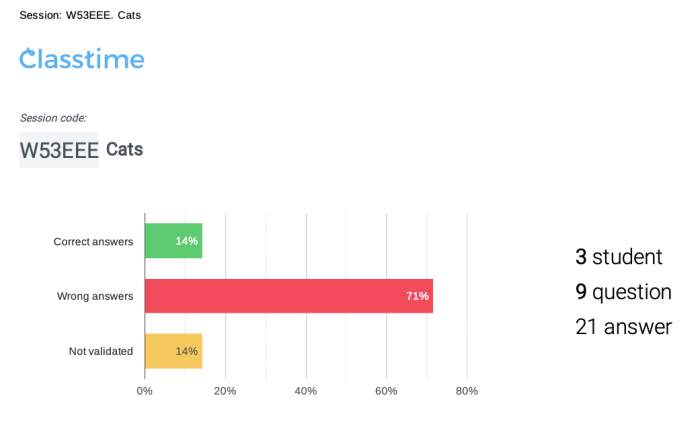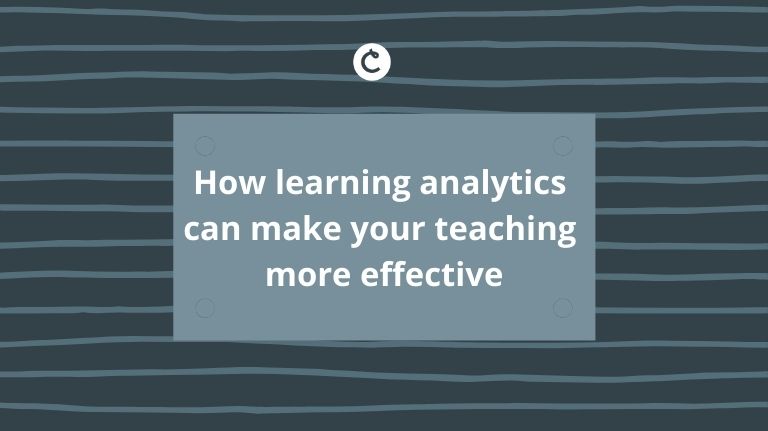How learning analytics can make your teaching more effective
As technology continues to evolve and become an integral part of our everyday lives, it’s only natural that we utilize it to improve education as well. One aspect of technology that promises to make this a reality is the use of learning analytics in the classroom to help refine the learning experience for students.
Always in the pursuit of learning, we recently completed edX’s course ‘Analytics for the Classroom Teacher,’ which offered many insights into the intricacies of using technology and analyzing data to fine-tune the teaching and learning experience. There are two main categories of analytics used for educational purposes. Teaching analytics analyzes the teaching design by looking at your lesson plans and reflecting on how effective that is for the student learning experience. Learning analytics collects and measures student data and analyzes how you can refine the learning experience to make it more effective for the student.

By utilizing learning analytics, in particular, you are able to better understand the learning level and ability of each student and can then tailor the learning experience for each student. Essentially, this allows you to identify particular needs of each student and make quick, data-driven decisions about how to foster student learning in the most effective way.
Here, we focus on three main frameworks within learning analytics.These different frameworks collect student data in order to help you adapt your teaching style in a way that increases student engagement and understanding.
1. Descriptive Analytics — This framework takes the student’s past and aims to analyze the student data to find patterns in the student’s learning progress. Simply put, descriptive analytics describes what has happened and the way things are, allowing you to make strategic decisions on the best teaching style for each student. For example, you can use descriptive analytics to find out how much your class knows about the lesson. After analyzing the data, you might find that implementing scaffolding strategies or differentiated learning processes into your lessons may be an effective way to reach more students. Some universities and districts have descriptive analytics tools built right into the teacher’s management system.
Quick Tip: Classtime is also a great tool to use for Descriptive Analytics. It allows you to export a PDF insights report for each session your class completes in the app. Create a session surrounding your lesson, motivate and engage your students, then export the insights report to see how you can make your lessons more effective.

2. Predictive Analytics — As the name suggests, predictive analytics offer insights into future trends in your students’ understanding of the material. This framework uses the student’s past data and current data to determine what is likely to happen next. This is a great analytics framework to identify students who are ‘low-performing’ or ‘low-engaging.’ This can allow you to implement methods specifically meant to help those at-risk students get back on track and reach their full potential. For example, Sam, a middle school math teacher from Oregon, tells us:
We use predictive analytics to help determine which students are at-risk. It tracks the students throughout their academic career so we can see how they grow over the years. That way, if we see a student, or group of students, that are falling particularly far behind, we are able to intervene and correct the issue before it becomes a roadblock in the student’s learning path.
3. Prescriptive Analytics — This framework not only provides teachers with data you can then use to make actionable decisions, but it provides alternative suggestions to make your teaching more effective. Based on the student data collected, the analytics tool generates suggestions on different educational resources and tools to utilize in order to make a greater impact on students. Prescriptive Analytics provides schools and teachers with insights into student understanding and adaptive instructional techniques based on student performance.
While there are many ways to analyze student data, it’s important to make sure you’re taking the right steps to keep your students’ personal information safe. What’s even more important to remember is that the data itself is not what influences the student’s learning experience. It’s the receptiveness of the teacher and willingness to adapt their teaching style to better meet the needs of the students that make the real difference.
Classtime can help you get started with learning analytics in the classroom today:


Ray
June 3, 2018 at 2:11 amThanks, it is quite informative
Reply